
Silver Screen / Pit Lane / Catwalk: Tommy Hilfiger’s F1 Campaign with Damson Idris

“We knew from the outset that this was a rare and significant cultural moment, F1 at the centre of a global entertainment spotlight, with a feature film on the horizon.” Jack Goodwin, executive producer at Kode, is talking about a project that recently allowed the company to flex the whole range of muscles it’s developed over the past few years. And to do it in style, for Tommy Hilfiger’s campaign around one of 2025’s biggest film moments – the ‘F1: The Movie’.
“We were told that Tommy Hilfiger was the only official fashion partner on the race suit in the film, so it was an honour to contribute to a campaign that was part of something so much bigger; a creative collaboration that would shape both advertising and film history,” he says.
Kode delivered a fully integrated, multi-platform campaign for the launch of Tommy Hilfiger’s APXGP Collection, tied to the release of ‘F1: The Movie’. Directed by Lu Xiao Wei, the production spanned film, photography, and immersive media, all captured in a single day of shooting in South Africa. The centrepiece was a high-octane commercial starring brand ambassador Damson Idris, channelling the energy of his on-screen character Joshua Pearce while showcasing the APXGP line. Micaih Carter and Sulay Kelly shot hero stills, lifestyle imagery, social assets, and behind-the-scenes content, creating a cohesive global image library. Kode also partnered with Grand Visual on anamorphic 3D DOOH activations in London, New York, Tokyo, and Hong Kong, with the Piccadilly Lights takeover as a flagship moment.
The general approach was to maximise every second we had with Damson Idris, capturing a wide range of assets that could meet the scale and ambition of the moment. “As the project evolved, so did the brief,” says Jack. “What began as a film-centric job quickly expanded into photography and immersive content.”
This was a perfect opportunity for Kode to draw upon every facet of its in-house capabilities, from live-action direction, photography, and immersive technology. Integrating them seamlessly into a fully connected, multi-platform campaign.
As a huge film tie-in, Tommy Hilfiger’s key objective was to spotlight Damson Idris as the fashion label’s new brand ambassador, while showcasing eight key looks at the heart of the campaign. And of course, the US apparel company wanted to establish a clear connection back to the F1 movie.
As director, Lu Xiao Wei had to understand the context of the summer blockbuster that the campaign would sit alongside. So it was vital that she had visibility of the film’s trailer during pre-production. She hadn’t seen the whole feature film, though, so she had to write the script and develop storyboards based on limited information. “This naturally added a layer of complexity, as we were building a narrative that needed to feel fully integrated with a world we hadn’t entirely seen,” says Jack. “That said, Lu is a big F1 fan as well, so she spent a lot of time designing the world and the shots to create compositions that felt authentic to F1 and, in turn, the film.”
As the process evolved, particularly in the offline edit, the team was granted access to more material from the film, which allowed them to refine and strengthen the connection between this work and the broader F1 Movie universe.
Lu divided the brief into three main aims:
- Showcase Damson in the eight looks from his capsule collection with Tommy x F1
- Recreate the iconic paparazzi moments seen with F1 drivers like Lewis Hamilton in the paddock
- Weave in footage from the F1 movie.
“As the director, my primary ambition was to elevate the visuals beyond traditional paparazzi shots and create something cinematic and premium, while staying true to the energy and dynamism of the fashion world,” she says.

One of the key considerations in that was making sure the visual language of the campaign felt cohesive with both the F1 universe and the Tommy Hilfiger brand, but also seamlessly integrated with the character Damson portrays in the film, Joshua Pearce. “We wanted to extend his story beyond the track and into the Tommy Hilfiger world,” says Lu. “The first step in this process was Damson's performance. It was a privilege to collaborate with such a talented actor, and we wanted him to stay true to Joshua’s character throughout the shoot. His ability to bring authenticity to the role truly made the scenes come alive.
“Next, we wanted to make sure our visuals matched the cinematic quality of the F1 movie itself. It was an ambitious goal, but my DoP, Gaul Porat, and I dove deep into the footage from the F1 movie trailer, analysing the camera angles, shot types, and colour palettes to create a visual framework that we could build upon. From there, we infused the smooth transitions, dynamic pacing, and high-fashion editorial energy that I’ve developed in my past work into the shoot. The aim was to take the audience on a journey with Damson, as Joshua, through the paddock, the pit lane, and onto the track, as he fluidly transitioned into each of his Tommy Hilfiger capsule looks.”#
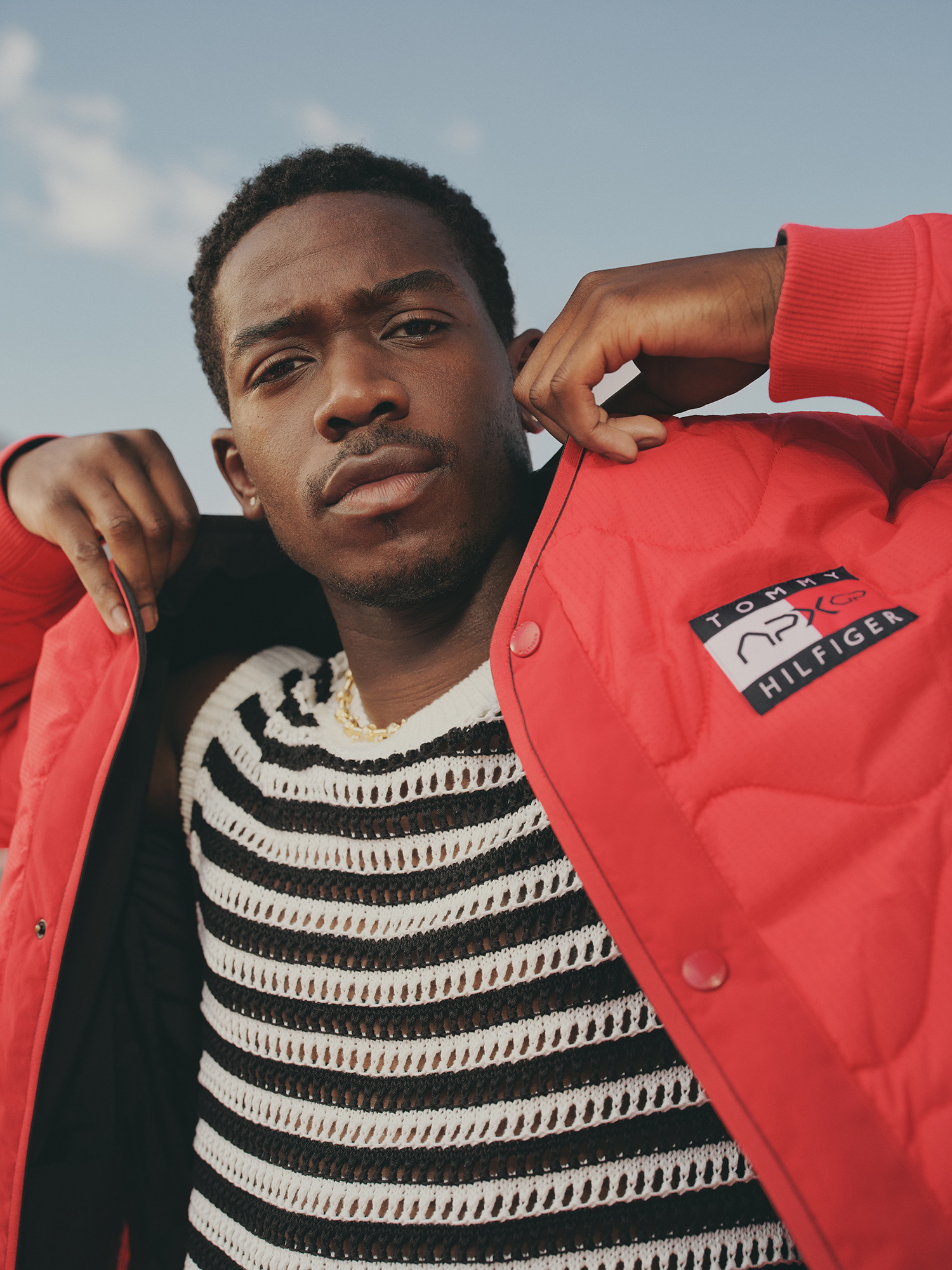
Being true to the F1 brand was a “massive priority” for Kode, says Jack, which is why the company tapped up production designer Riccardo Pugliese, who, he says, “lives and breathes F1” and who “played a vital role in keeping us honest and ensured we maintained authenticity to the F1 brand”. If certain elements didn’t truly reflect a race weekend, then they didn’t make it into the campaign. Jack applauds Riccardo’s “dedication to the minutiae elements of F1 that only a true fan would know.”
“As an F1 fan, shooting at a real Grand Prix race track felt like a dream come true,” says Lu. “We used the track as our canvas, carefully crafting environments that felt genuine, yet still put the focus on Damson and the clothing. It was important that the shots looked as though we captured Joshua arriving at the paddock during an actual race weekend. At the same time, we had to avoid overwhelming the frames with unnecessary background clutter.”
This sort of project blurs the lines between film marketing, fashion editorial, and entertainment. And the key to that from the director’s perspective “was in how we integrated storytelling with fashion, and in crafting a truly cinematic experience that felt both narrative-driven and visually dynamic”.
First, the decision to keep Damson's character, Joshua Pearce, consistent across both the F1 movie and the Tommy Hilfiger campaign was crucial. “His journey wasn’t just about showcasing clothes; it was about creating a world where fashion naturally extends from his character, a visual expression of his evolution,” says Lu. “This allowed us to seamlessly combine the narrative of the movie with the fashion editorial, where the clothes didn’t just serve as props but were integral to the story. It wasn’t simply about selling a product; it was about positioning the fashion as part of Joshua’s character arc.”
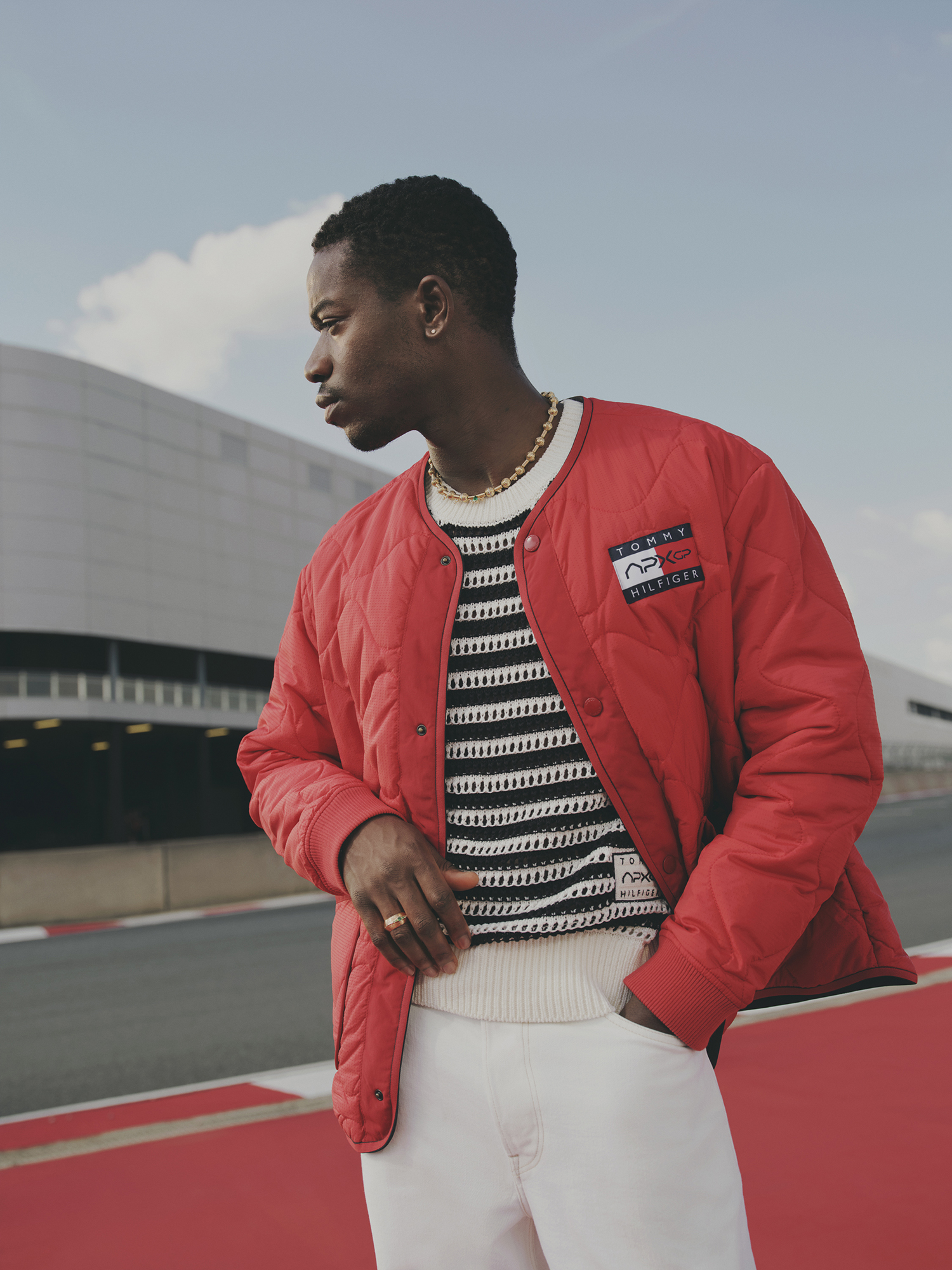
Visually, the project had to be elevated to feel as cinematic as the movie. Rather than following a typical fashion campaign structure, the film leaned into the F1 movie's visual aesthetic, using dynamic camera movements, smooth transitions, and vibrant pacing. “This approach merged the worlds of high fashion and film marketing, creating a visual language that felt both dynamic and entertaining. The cinematography, combined with the bold fashion styling, created an environment that felt like a short film rather than a traditional fashion ad, keeping the entertainment factor alive and engaging the audience,” says Lu.
Another significant creative decision was the consideration of casting – the human production design, if you like. “To ensure the world felt as authentic as possible, we populated the paddock and pit lane with background characters that you'd realistically encounter at a Grand Prix event, race crew, photographic and video camera crews, broadcast presenters, VIP guests, and more,” says Lu. “It wasn’t just about capturing their on-screen energy and persona, but also ensuring their costumes felt accurate and true to what you’d see on a real race day. These elements added another layer of realism to the film and contributed to the seamless blending of fashion, film, and entertainment.”
Finally, the team paid careful attention to the details of the environment. By incorporating genuine F1 elements (like the race track, paddock, and F1 VIP passes) into the production design, the project was able to ground the high-fashion visuals in a real, authentic world. “This not only brought depth to the campaign but also allowed the fashion to feel as much a part of the F1 universe as it did of the editorial space,” says Lu. “The result is a campaign that feels cohesive, entertaining, and immersive… a perfect balance of film, fashion, and entertainment.”
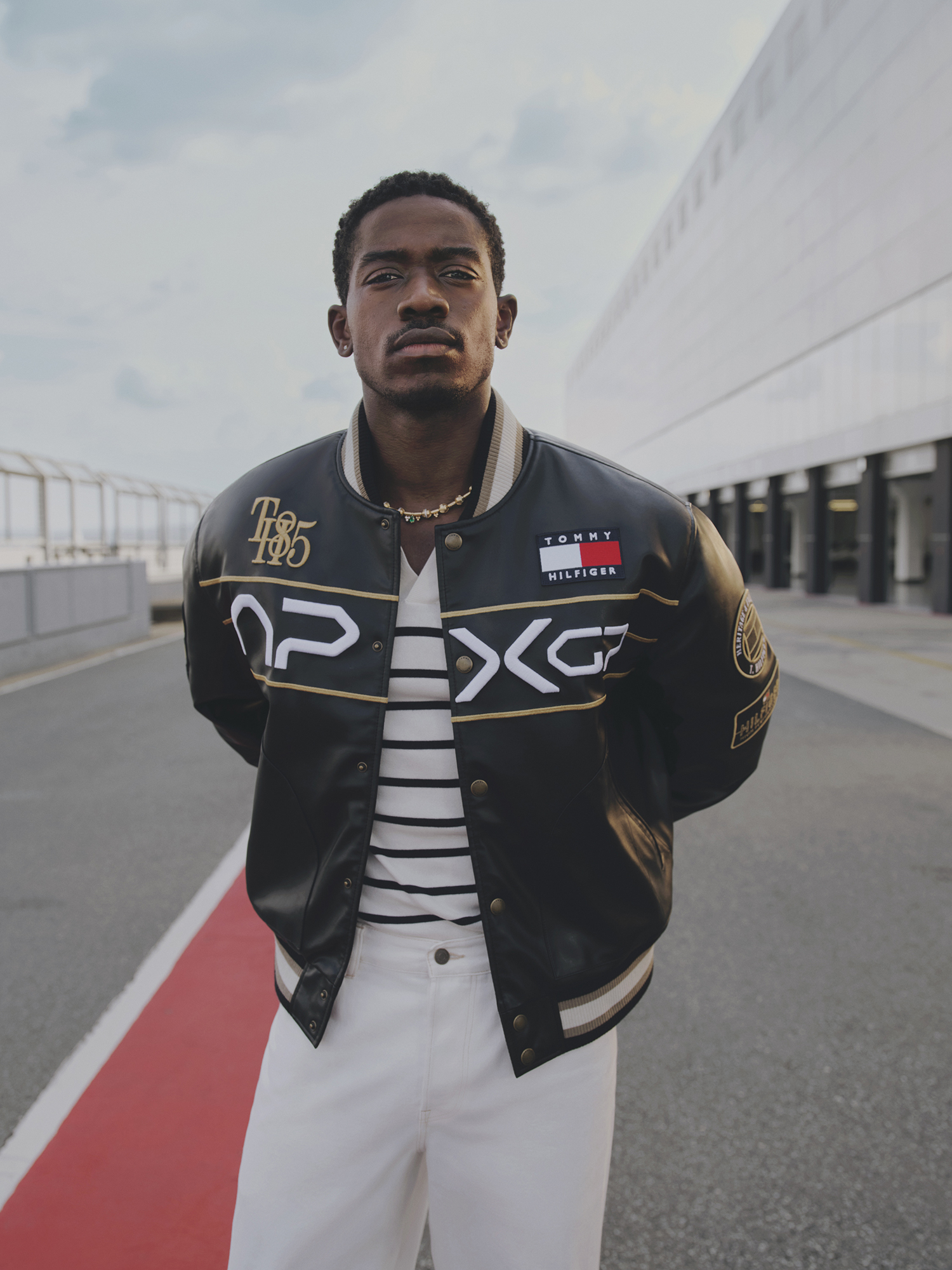
For Jamie Brewer, the project’s producer, there were plenty of challenges to embedding a fashion shoot and brand campaign within a film world – especially on location in South Africa. In early chats, Silverstone (the home of the British Grand Prix) was being considered as a location. Due to Damson’s availability, the team had to pivot and base the production in South Africa. “Unexpectedly, we had rain throughout the entire week leading up to the shoot, which was especially tough given that sunshine and outdoor settings were essential to delivering on the brand’s creative vision,” he says. “We explored various contingency plans, including shifting the schedule, but in the end, we got lucky: the weather cleared, and we had a perfect sunny shoot day in Johannesburg.”
With just six hours of time with Damson, the team captured eight looks across live action, social, stills, and anamorphic units. “It was intense,” admits Jamie, “but as with every athlete or celebrity shoot with detailed planning and a sharp, aligned crew, we made it all happen.”
Jerome Botbol, Kode’s head of immersive, was in charge of the anamorphic out-of-home component of the campaign. Anamorphosis is a visual technique that intentionally distorts imagery so that it appears 3D when viewed from a specific angle or through a curved surface. When applied to large-format digital out-of-home displays like Piccadilly Lights, it offers brands a powerful opportunity to capture attention through striking visuals and illusion.
“Unlike standard flat displays, anamorphic screens feature curvature which introduces lots of creative potential,” Jerome explains. “With consumer attention harder than ever to command, anamorphic content has become a compelling way to cut through the noise, bring audiences closer to the action, while helping to deliver a strong sense of depth and motion that boosts both engagement and retention.”
One of the most critical production considerations when shooting for anamorphic DOOH is camera angle and talent positioning. A 25-degree shooting angle has proven optimal, as it allows the content to align visually with multiple viewer perspectives across public space. This angle must be planned from the outset to maintain coherence between the filmed action and final screen presentation.
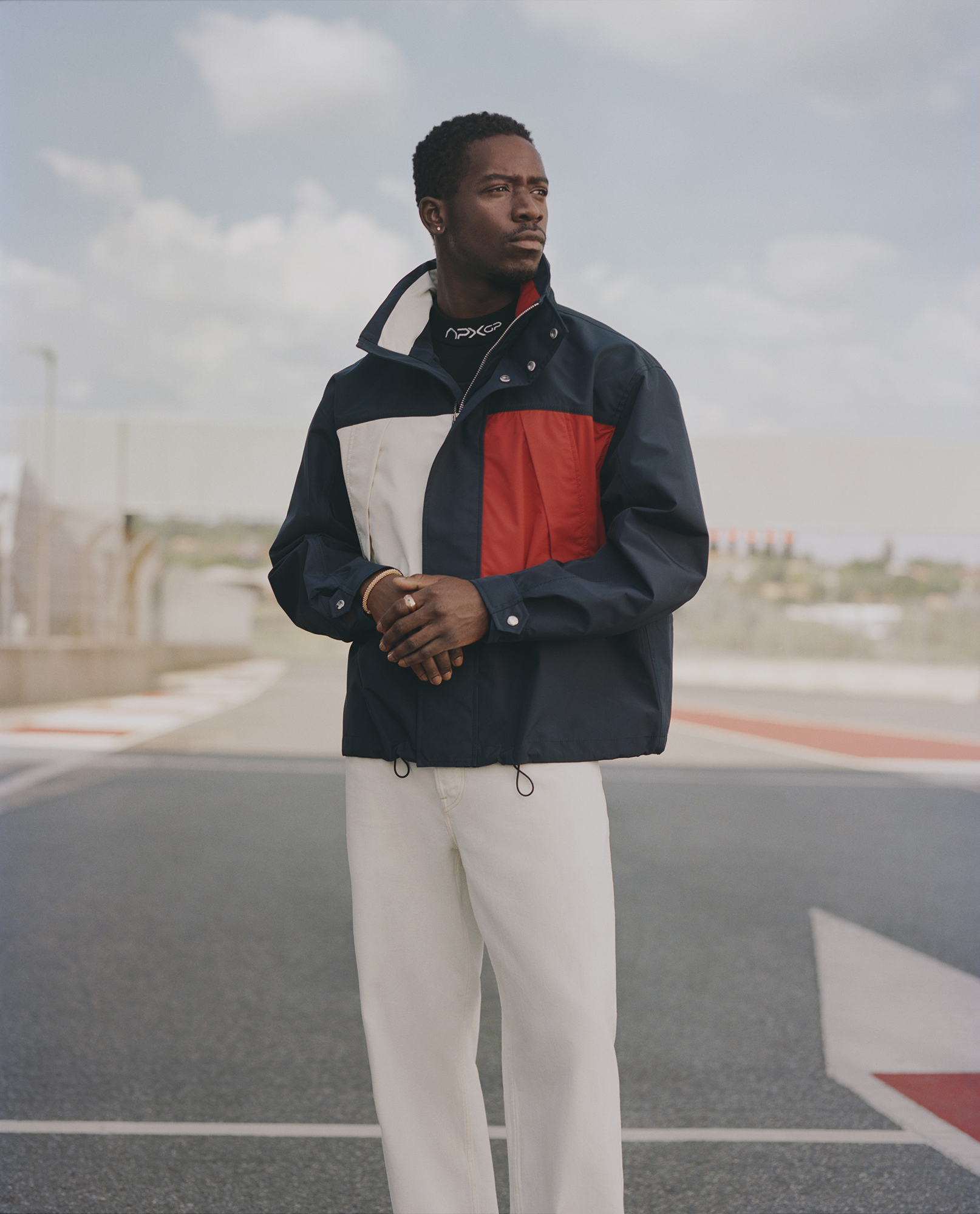
To match the cinematic language of the campaign’s hero content, Kode shot with anamorphic framing, creating ultra‑wide images with controlled distortion. By carefully selecting takes from the main ad shoot that were filmed with the right perspective, the team ensured the DOOH content felt like a seamless extension of the ad itself, both aesthetically and tonally.
During production, Jerome and the Kode team kept Damson within a controlled depth zone to avoid distortion and ensure clarity across the display’s field of view. Negative space and foreground-background separation were used strategically to enhance the 3D effect, making it appear as though the talent was emerging from the screen for maximum visual impact.
“Costume and prop design played a role in reinforcing the 3D effect, leveraging Damson’s jacket to help ‘break the frame’ and really sell the depth illusion,” explains Jerome. “We also paid close attention to scale between live-action footage alongside any composited CG or graphical elements created by the talented team at Grand Visual.”
Piccadilly Lights offered immediate scale and cultural context, placing the filmed visuals in a high-footfall, high-visibility urban setting. “As one of the most iconic digital screens globally, it amplified the campaign's reach while grounding the content in a real-world location,” says Jerome. “For anamorphic executions, this site is uniquely suited to deliver impact; its curved screen and scale allow for immersive 3D illusions that truly stop and connect with passersby.
“To capitalise on this, we really focused on capturing the 3D illusion of depth, leveraging perspective and motion. The sense that the talent is physically reaching out or making eye contact with the audience enhances viewer engagement and creates a memorable, shareable experience.
“As the medium is still underutilised in its full potential, especially compared to the dominance of static or 2D digital content, this approach really stands out. The unexpected appearance of hyper-wide visuals breaking the screen's frame boundaries creates real tension, as if the fictional world starts to merge into the real world, drawing Piccadilly’s crowds into the story.”
Jerome is energised by the potential of all these principles combining in this new format, meaning brands and filmmakers can create visually compelling, immersive anamorphic content that captivates audiences and maximises impact on DOOH platforms. “With the rise of 3D advertising, the future of anamorphic storytelling is set to evolve, offering even greater creative possibilities,” he says.
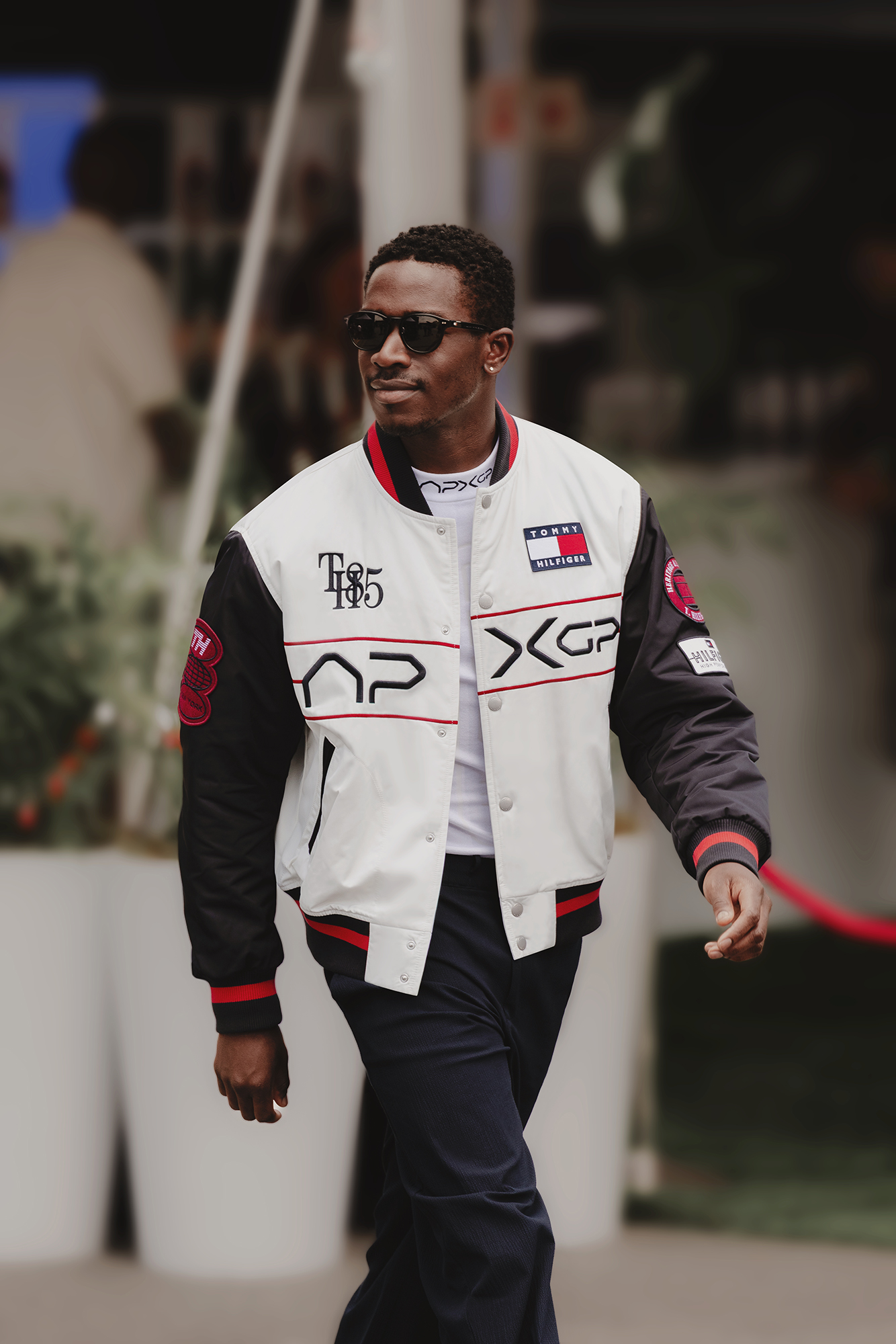
But even an expansive job like this awakens ideas for what the team would do to go bigger and better next time. “We would have loved to expand the size of the cast and increase the scope of the environment,” says Jack. “Being able to swing the camera around and reveal the full pit lane and garage setup would have added even more depth to the world we were creating. But due to budget and time constraints, we had to make some compromises. With more time and resources, we would have scaled up the creative even further to amplify the storytelling and bring the race weekend world to life in an even more immersive way.”
Given more time, Jerome would have ideally been able to explore deeper audience interactivity, maybe integrating live, responsive elements or immersive augmented reality content extensions. “The Piccadilly activation showed us how powerful dynamic storytelling can be,” he says, “and it sets a strong foundation for experimenting further with interactive tech and richer, multi-sensory experiences where turning DOOH, mobile, retail, and digital into unified, interactive playground can really elevate the brand narrative and bring audiences closer to the story wherever they are.”
Throughout this project, its scale was obvious. “While we weren’t across all the details, we were aware of some of the wider press moments and brand activations Tommy Hilfiger was planning around the film,” says Jamie. “It was clear just how monumental this partnership was for them. It was a reminder of what it means to operate at a true global scale. Every decision, from creative to logistics, had to match the ambition of both the brand and the F1 Movie. It pushed us to think bigger, move faster, and make every frame count.”















